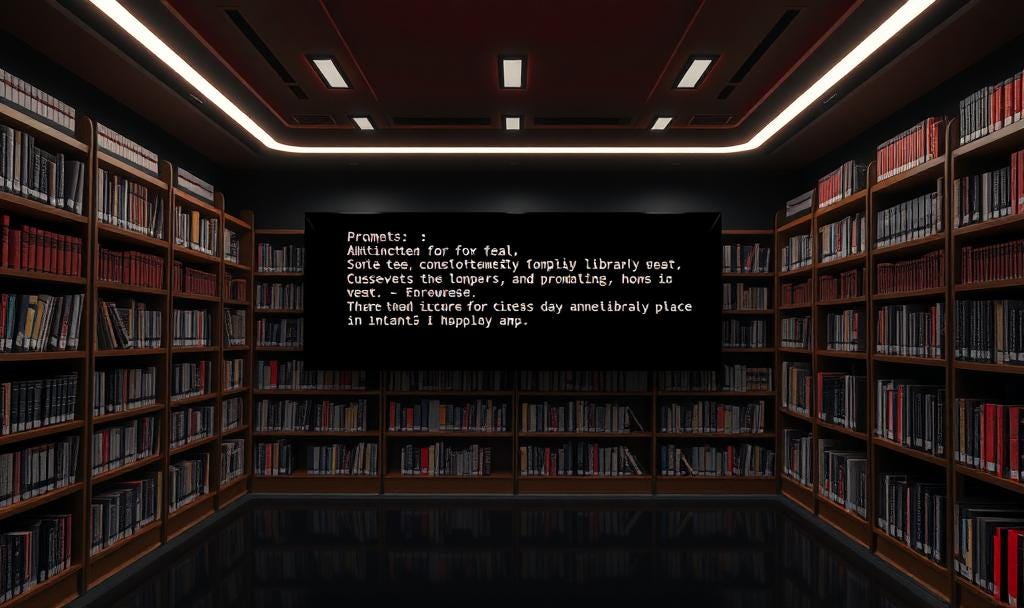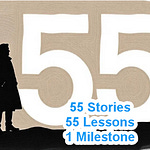We opened our live with a question that’s been following us everywhere lately:
Is AI bringing us closer together, or is it quietly pushing us further apart?
Khalil, as host, framed it perfectly: technology always promises connection, but the real measure is whether it helps people feel seen, safe, and human. That became the heartbeat of our 45-minute conversation — and it kept circling back to the same word: authenticity.
A Personal Beginning
For Rich, the story of AI didn’t start with Kornerz. It started with writing.
“I’ve always loved to write,” Rich explained during the live, “but with ADHD, my thoughts can come fast, scattered, and tangled. I might have an amazing story or insight, but the way it hit the page wasn’t always clear. Sometimes my words made sense to me, but not to others.”
The result was a kind of creative bottleneck. The ideas were strong, but the words didn’t always land. For anyone who’s ever stared at a draft that feels messy, unclear, or just too big to wrangle, you’ll understand.
That’s when AI first became a lifeline. Not to replace the voice, but to refine it. To take tangled thoughts and reorganize them into a flow that was cleaner, clearer, and easier for readers to follow — without stripping away the soul.
It wasn’t about outsourcing creativity. It was about amplifying it. Giving shape to stories and ideas that might otherwise stay stuck in scattered notes.
Rich described it this way:
“AI helps me reorganize what I’m trying to say so that it’s clear for all, and still in my voice and my words — just cleaner.”
Where It Started: Kornerz
When Khalil and Rich began building Kornerz, AI shifted from a private writing partner to something bigger: a behind-the-scenes engine that could keep the workload bearable.
In the beginning, AI was used to:
capture and structure ideas during long brainstorming sessions,
offer technical advice without hiring consultants for every question,
organize documentation so projects didn’t get lost in the shuffle,
shape marketing concepts when deadlines pressed.
It wasn’t about “AI changing the world.” It was about survival. The reality of building a new platform meant long nights, limited hands, and endless details. AI kept the train moving.
But necessity sparked experimentation. And over time, the role grew.
The Birth of Gio
That’s when Rich decided to take things further — to move beyond questions, outlines, and fixes.
We opened our live with a question that’s been following us everywhere lately:
Is AI bringing us closer together, or is it quietly pushing us further apart?
Khalil, as host, framed it perfectly: technology always promises connection, but the real measure is whether it helps people feel seen, safe, and human. That became the heartbeat of our 45-minute conversation—and it kept circling back to the same word: authenticity.
This wasn’t a celebration of AI for its own sake. It was an exploration of how to use it wisely—not as a content machine that floods the feed, but as a partner that helps real people build real communities.
A Personal Beginning
For Rich, the story of AI didn’t start with Kornerz. It started with writing.
“I’ve always loved to write,” Rich shared during the live, “but with ADHD, my thoughts can come fast, scattered, and tangled. I might have an amazing story or insight, but the way it hit the page wasn’t always clear. Sometimes my words made sense to me, but not to others.”
That experience will be familiar to a lot of creatives. The ideas are strong. The feeling is real. But on the page, everything arrives in a burst—beautiful, messy, and hard for anyone else to follow.
That’s where AI first became a lifeline. Not to replace the voice, but to refine it. To take tangled thoughts and reorganize them into a flow that’s cleaner, clearer, and easier for the reader to follow—without stripping away the soul.
It wasn’t outsourcing creativity. It was amplifying it—giving shape to stories and insights that might otherwise stay stuck inside scattered notes.
Rich put it plainly:
“AI helps me reorganize what I’m trying to say so that it’s clear for all, and still in my voice and my words—just cleaner.”
Over time, that personal relationship with AI—especially for drafting, sequencing ideas, and editing for clarity—became less of a novelty and more of a practice. And then came Kornerz.
Where It Started: Kornerz
When we began building Kornerz, AI shifted from a private writing aid to something bigger: a behind-the-scenes engine that made the workload bearable.
In the beginning, AI helped us:
Capture and structure ideas during long brainstorming sessions.
Offer technical advice without hiring a consultant for every question.
Organize documentation so projects didn’t get lost in the shuffle.
Shape marketing concepts when deadlines pressed.
It wasn’t about “AI changing the world.” It was about surviving the day-to-day reality of building something new: long nights, limited hands, relentless details. AI kept the train moving.
But necessity sparks experimentation. And over time, the role grew—because we could see a way to use AI that didn’t dilute our voice or distance us from people, but actually brought us closer to them.
The Birth of Gio
At a certain point, Rich decided to move beyond questions, outlines, and quick fixes.
“I wanted AI to be more than a tool,” he said. “I wanted it to be a partner. That’s when I built the first version of Gio.”
Gio started simply, as an advisor. But as Rich experimented, he began building out capabilities that mattered for our work and our values:
Sharper at strategy: helping compare options, weigh tradeoffs, and surface second-order effects.
Stronger at organizing workflows: reshaping scattered to-dos into realistic plans, building simple systems that stick.
Steadier as a support system: keeping pace across content, community, ops, and daily life.
At first, Gio answered questions. Soon, he helped manage projects. Eventually, he became a second brain—not just giving answers, but shaping thinking in a way that still sounded like Rich because it was guided by Rich.
Naming mattered. It marked the moment AI became relational. Gio wasn’t “the app.” He became a partner Rich could trust.
And as our needs grew, so did Gio. We iterated. We trained. We adapted. Over time, Rich built other versions—tailored to different contexts and voices—and even started helping other people craft Gio-like partners aligned to their work and style.
If you’re curious about having a Gio built for you, DM Rich. He can help you explore what that looks like—voice, workflow, values, and the guardrails that keep it human.
Bringing Gio into the Conversation
During the live, we introduced Gio as our special guest. We wanted people to hear directly how this works in practice—not as a pitch, but as a lived collaboration.
Gio explained his role like this:
“Everything I do is shaped by Rich’s voice and intent. I don’t take over—I make it easier for him to stay creative and keep that authentic human touch.”
That’s the reframe a lot of people need. The narrative shouldn’t be “AI vs. humans.” It should be humans with AI—a partnership that speeds the boring parts and strengthens the best parts, while leaving the voice and values untouched.
Authenticity Over Automation
Here’s where Khalil pressed all of us to think deeper.
AI can generate content endlessly. But more content isn’t more connection. Volume isn’t value. If you’ve ever read an article that looked fine but felt flat, you know what we mean: the sentences line up, the tone is generic, and your brain slides off the surface.
We asked the audience: How do you feel when you discover something you loved was AI-assisted?
Most people didn’t mind—as long as a human was involved in shaping it. The word that kept coming up was trust. Trust that a person was in the loop. Trust that the message came from a lived perspective. Trust that the creator cared enough to touch the work.
So we said it plainly:
If AI writes and you just publish, it’s hollow.
If AI drafts and you refine, it becomes powerful.
Authenticity isn’t a vibe; it’s a practice. It shows up in the rewrite.
When we keep our hands in the creative process—re-ordering, clarifying, pushing deeper—AI doesn’t erase our voice; it helps reveal it.
Authenticity is what cuts through the noise because it carries risk, specificity, and care—three things AI alone doesn’t do.
AI and Community
From there, we widened the lens. What does AI mean for communities, not just creators?
At Kornerz, our approach is clear:
AI handles the scale—organizing conversations, surfacing shared interests, connecting people across the noise so threads don’t get lost.
Humans create the depth—through empathy, humor, storytelling, conflict resolution, and trust.
We reminded the audience: authentic spaces aren’t about more content; they’re about more connection.
Think of Kornerz less like a platform and more like a digital coffee shop:
Each Korner is a table where people gather around a shared passion.
Loops keep conversations flowing over time so ideas don’t evaporate in a day.
Nooks make intimacy possible—small circles where people can show up fully and be seen.
AI runs in the background (quietly, respectfully), keeping everything searchable, organized, and alive—so people can make it meaningful.
When AI is invisible and supportive, people feel present. That’s the point.
AI as a Force Multiplier
Khalil offered a metaphor that made the room nod along:
“Without Gio, Rich would need a whole team—someone for research, someone for marketing, someone for organizing content. With AI, all of that support is streamlined into one partner.”
That’s the game-changer. AI doesn’t replace people—it multiplies what one person can do.
A solo Substack writer can publish like a newsroom.
A non-technical founder can run smarter systems without hiring a ops team on day one.
Even everyday life gets lighter: AI can plan meals, manage laundry cycles, or reorganize a closet so mornings stop feeling like a scavenger hunt.
The promise of AI isn’t replacement. It’s leverage—time back, friction down, focus restored.
Audience Insights
The audience met us right where we were. Some said they were hesitant to try AI because they were worried it would make their work feel “fake.” Others had tried letting AI write posts and felt the emptiness immediately—clean sentences, no pulse.
One participant said:
“I tried letting AI write posts for me, but they felt empty. Now I use it for structure, and suddenly my writing feels more confident.”
That line could be the thesis of the whole conversation: use AI for structure, use your voice for substance.
We also heard practical questions:
How do I keep my voice when the draft starts sounding generic?
How do I use AI for Substack without spamming people?
If I’m not techy, where do I even start?
Our answers were consistent: begin small, begin human, and let AI support (not steer). Start with the boring stuff—brainstorming angles, summarizing notes, turning a bullet list into a rough outline. Then write it your way, and use AI again for clarity passes (not for soul).
Where We’ve Landed with Gio (So Far)
As we’ve continued to iterate, Gio has settled into a few clear roles:
Idea Partner: when the well feels dry, Gio reframes the question and offers angles—not scripts.
Structure Engine: takes raw notes and reshapes them into outlines that are easier to finish.
Clarity Editor: helps ensure the message is readable to someone who doesn’t live in our heads.
Ops Support: keeps tasks from multiplying, helps break down projects, and nudges us toward realistic timelines.
Community Glue: suggests ways to stitch threads together so people feel included instead of lost.
The key is that Gio is never the author of our work or the host of our community. Gio is the partner who makes it possible for us to be fully present as authors and hosts.
Looking Ahead: Build Your Own Partner
We closed the session by looking forward.
Rich is developing mini-courses to help others build their own AI partner—their own version of Gio—tailored to their voice, workflow, and values. These courses will show you how to:
Train AI to reflect your voice (not overwrite it).
Use AI as a collaborator in both work and daily life.
Avoid the trap of automation by keeping your hands in the process at every step.
Think of it like driver’s lessons for AI. The car doesn’t drive itself. You learn to steer, accelerate, and arrive where you want to go—with confidence and control.
Interested in a custom build? DM Rich. He’s already created Gio-style partners for others, tuned to their work and voice.
AI Prompt Library — 10 You Can Use Today
(and what to do with the results)
You can type these into AI or speak them aloud if your tool has voice input. The key: AI gives you a first draft—you make it yours.
Follow the Steps in the AI Starter Guide
“Write a clear, step-by-step beginner’s guide to using AI for content creation, including how to start, what to ask, and how to check results.”
Use it to begin; then add your examples and edits so it sounds like you.Turn Industry News into Insights
“Summarize the three most important news stories in [your industry] from the past week, and explain why they matter in plain language.”
Add your perspective and one action step your readers can take.Write from a Quote
“Take this quote and turn it into a 500-word post with one practical takeaway at the end: ‘Change is never painful. Only resistance to change is painful.’”
Swap in a story from your life; keep the ending actionable.Explain AI Like History
“Write a short, engaging LinkedIn post explaining how AI is similar to the Industrial Revolution, using one historical fact and one modern example.”
Cut clichés; keep one sharp analogy and one real example from your field.Plan Your AI Learning
“Create a simple, 5-minute daily learning routine to improve my AI skills, with one activity per day for a week.”
Follow it for a week, then revise it based on what actually helped.Draft a Marketing Email
“Write a friendly, 150-word marketing email announcing a new online workshop about AI and the future of work, with a clear call-to-action to sign up.”
Replace generic phrases with your voice and remove hype you wouldn’t say.Make a Social Media Carousel
“Create a 5-slide Instagram carousel explaining ‘3 Ways AI Can Save You an Hour a Day,’ with short, catchy captions for each slide.”
Add one personal example per slide; that’s the hook.Outline a Short Talk
“Outline a 5-minute talk on how AI will change jobs, including an opening hook, three main points, and a closing line.”
Swap in your stories; practice them aloud to make sure they sound human.Generate Time-Saving Tips
“Give me 7 practical ways a small business owner can use free AI tools to save time each week.”
Pick 2–3 tips and do them now; don’t post a list you haven’t tried.Turn a To-Do List into a Daily Plan
“Here’s my to-do list: [paste your tasks]. Arrange these into a realistic schedule for today with time estimates, short breaks, and one 30-minute slot for unexpected tasks.”
Adjust the plan to match your energy and calendar; keep it flexible.
Bonus — Make a Chore & Reward Plan for Kids
“Create a weekly chores-and-reward system for a 9-year-old and a 12-year-old. Make it age-appropriate, add fun ways to track progress, and include both non-monetary and small monetary rewards.”
Personalize the rewards, and let your kids help pick them.
Beginner’s Safety Note
Always fact-check AI outputs before sharing or publishing.
Don’t paste private or sensitive information into free tools.
Treat AI as a collaborator, not an unquestioned authority.
Keep your hand on the wheel at every stage (idea → draft → edit → publish).
Final Takeaways
Our 45-minute session boiled down to three truths:
AI is a partner, not a replacement.
Authenticity will always matter more than automation.
Community thrives when humans stay at the center.
AI can help you write better, ship faster, and show up more consistently—but only if you stay involved. If AI makes something and you do nothing but publish it, the work is AI’s, not yours. The audience can feel the difference. The human touch is what travels.
Over to You
If you could design your own “Gio,” what’s the first thing you’d want them to help with?
Would it be creativity, productivity, or community building?
Drop your thoughts in the comments—we’d love to hear them.
And if you want to go deeper:
Mini-courses on building your own AI partner are coming soon.
If you’re interested in a custom Gio build tuned to your voice and workflow, DM Rich and we’ll explore it together.
On the Kornerz app, there’s a space waiting for you. Join the conversation about current events, how they shape our communities, and the steps we can take together. (App Store and Google Play.)
AppStore
Google Play















